|
Our new tutor, Michael Amphlett, is a greenwood carver, practicing the art and craft of carving wooden wares, such as spoons, shrink-pots, bowls and other small items. The general craft of carving is often known by its Scandinavian name ‘slöjd’ (“sloyd”) and, in the last ten years, spoon-carving in particular has become a very popular pursuit. Teaching our keen students over this two-day weekend workshop, he enthusiastically supported each new learner to design and create their own personal brand of spoon. Who knew there were so many types!? One of the students remarked that she was less concerned with ending up with an actual spoon, because she was lost in the wonderment of the making process. 'It's meditative, it takes you out of yourself, the noises, scents and feel of the tools and the wood are a welcome antidote to modern life'. How do you start to carve a spoon? First you need to choose a piece of green (unseasoned) wood with character. All woods have different grain pattern, colour and suitability for spoon making, so look for a piece of wood where you can utilise that character to make something interesting. One student chose beech, and the piece she picked had deckchair like stripes of different coloured grain running through it. These will be positioned centrally to the bowl of the spoon. Another chose sweet chestnut because of its durability and because he wanted to get the circular grain pattern, naturally occurring in the wood, to run around the bowl of the spoon. We also had spoons in cherry, sycamore, applewood and birch, and some made from spallted wood, which has a dark colouration caused by funghi during the growing process. What are the most important tools to have? A good sharp axe is a must, and also a cross cut saw to cut into the wood to chop with the axe to. As you can see from the images, the students worked with these tools for most of the second day. Day one was axe work only when they created wooden spatulas, or butter knives. Once you have got your basic shape, then it's time to get out the spoon knives - usually a straight knife and a bent knife. The chopping block is also a must. How long does it take to make one? An expert can rough out half a dozen spoons in a day, ready for the finer work with the knives. Our students made one spoon each on day two of the workshop, in a variety of shapes and sizes! It takes years of practice however to create spoons as beautiful as those that Michael had in his collection. Some were even too precious for to him to sell, like this little collection of four small spoons all made from the same piece of wood. It's a pity they weren't for sale as I had my eye on these.... All in all, an excellent workshop with students achieving some wonderful work. We look forward to welcoming Michael back to Ardington for many more happy spoon carving workshops. To see his next available dates, you can click on the button below - we hope to see you spoon!
0 Comments
Your comment will be posted after it is approved.
Leave a Reply. |
Blog categories
All
Author:
|
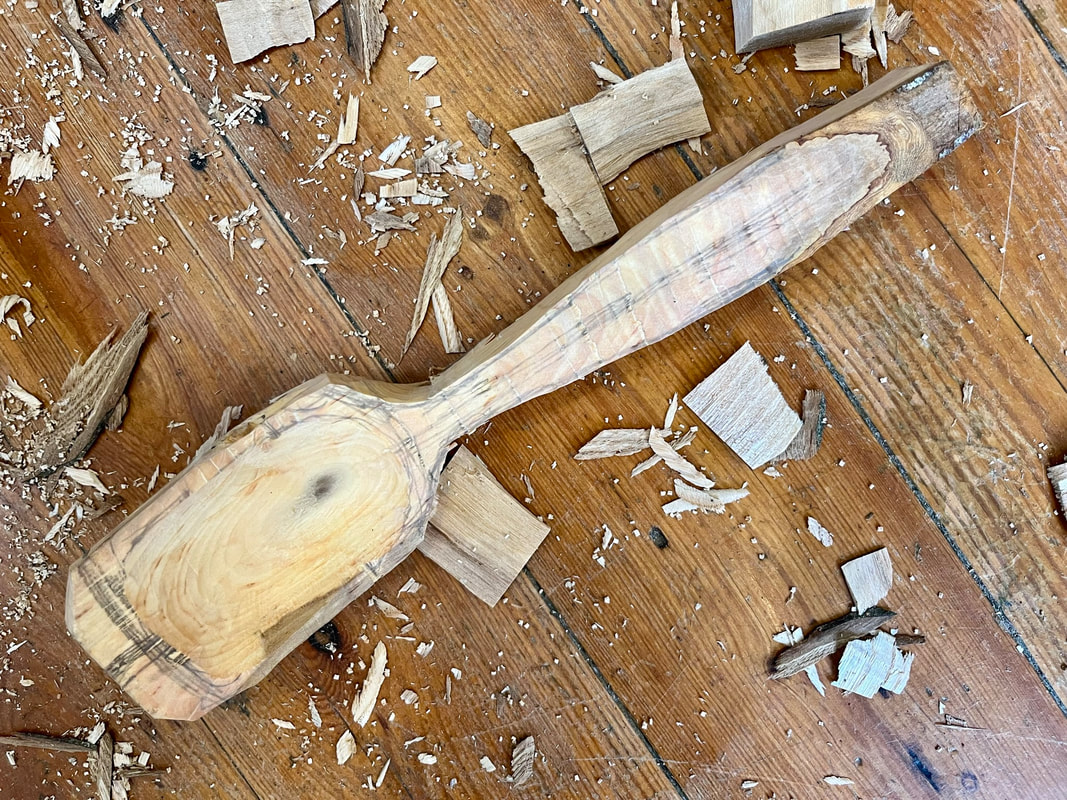
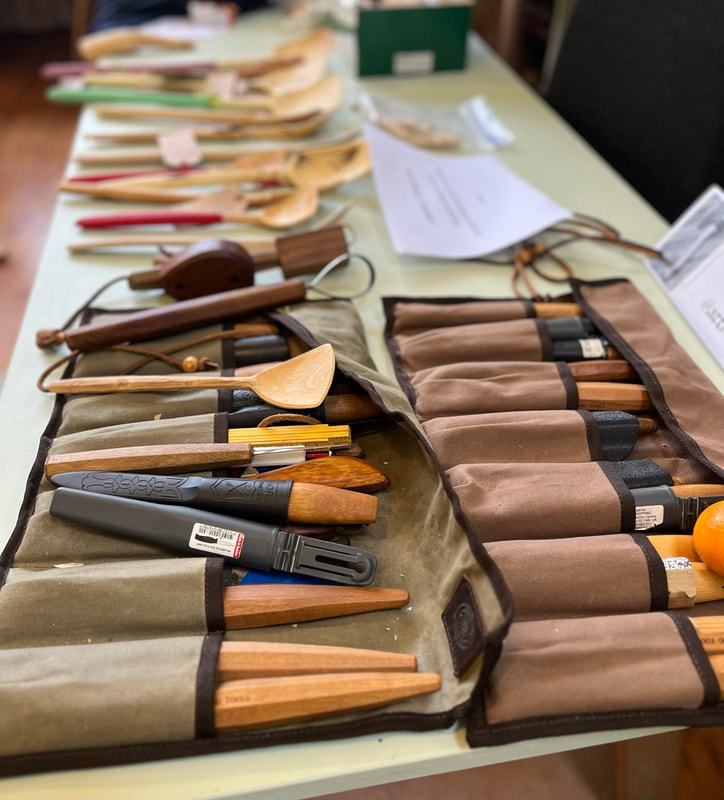

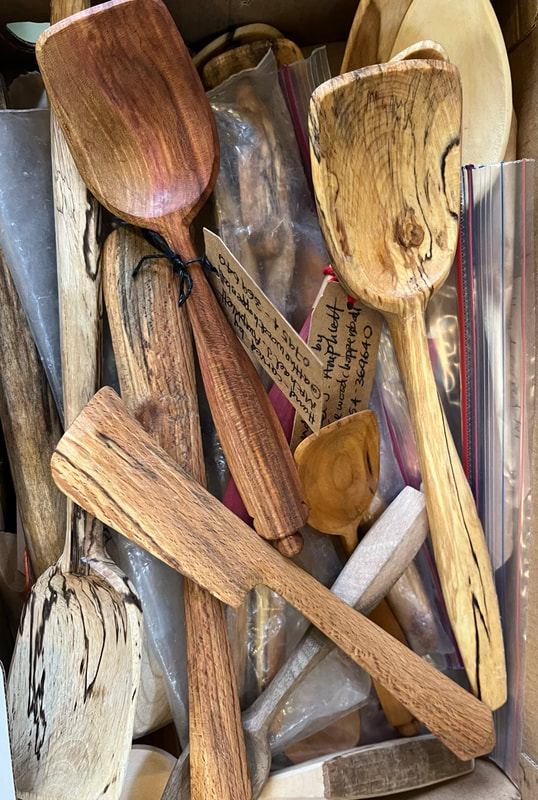

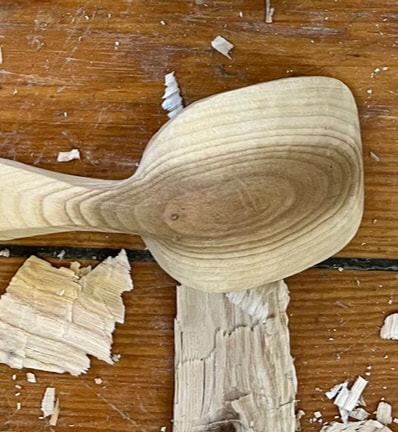







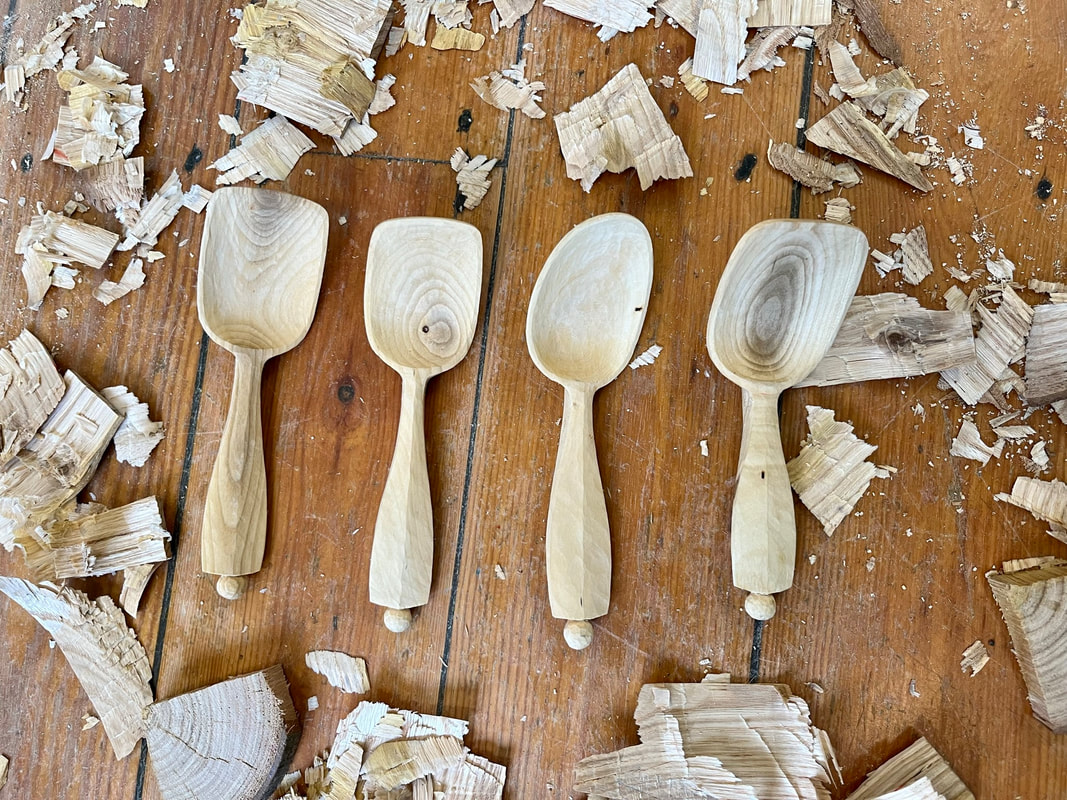






 RSS Feed
RSS Feed